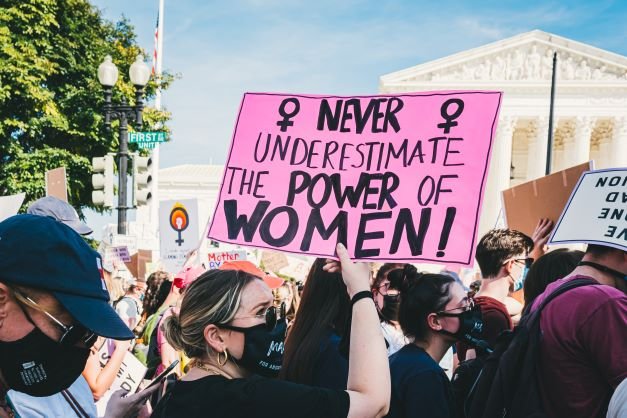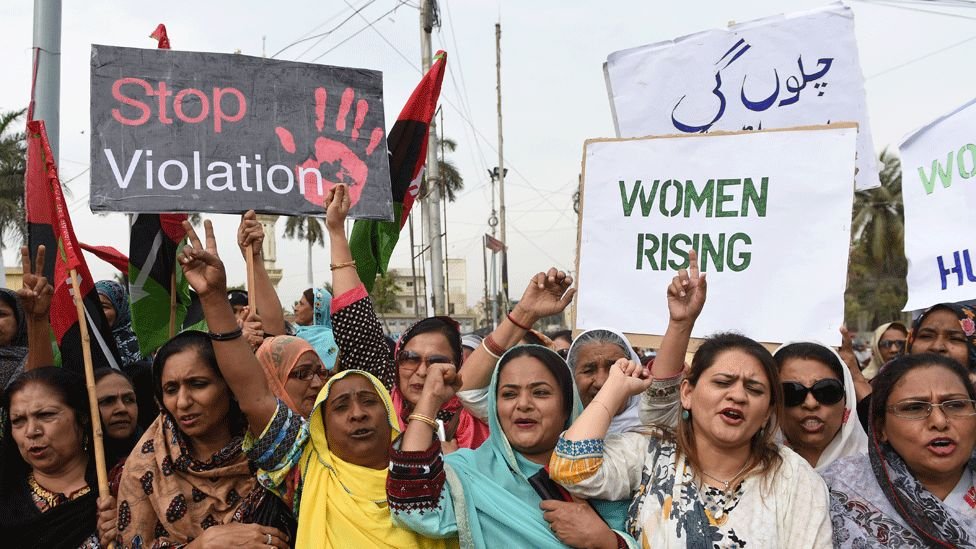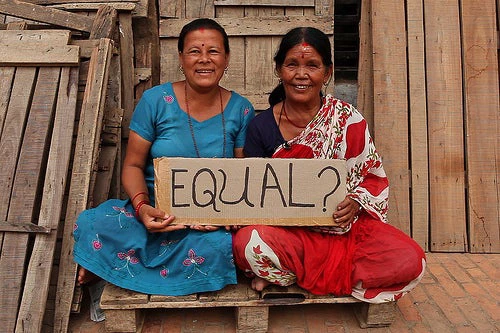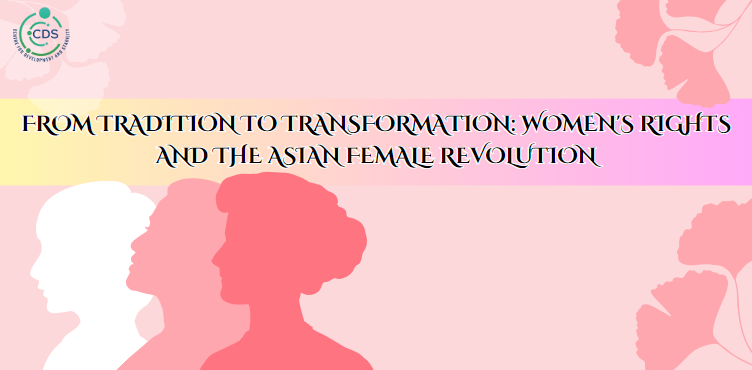Women’s rights have made significant strides over the past century. From suffrage to workforce participation, education, and reproductive rights, the global movement for gender equality continues to reshape societies.
However, progress has been uneven, and in many parts of the world, particularly in Asia, women still face deeply ingrained cultural, social, and economic barriers.
– The Global State of Women’s Rights

Gender Equality: A Global Perspective
Women’s rights have been the focus of international efforts through key frameworks like the Convention on the Elimination of All Forms of Discrimination Against Women (CEDAW) and the United Nations’ Sustainable Development Goal (SDG) 5, which targets gender equality by 2030.
Globally, about 49.6% of the population is female, but women remain significantly underrepresented in politics, leadership roles, and education.
According to the World Economic Forum’s Global Gender Gap Report 2023, while 90% of countries have some level of gender equality, it will take over 130 years to close the global gender gap fully.
Women are particularly underrepresented in key sectors like technology and politics.
The Pay Gap and Workforce Disparities
Globally, women earn about 77 cents for every dollar earned by men, which translates to a 23% global gender wage gap.
The participation of women in the workforce remains constrained by unequal access to education, cultural norms, and unpaid caregiving responsibilities.
The World Bank estimates that gender inequality in the workforce could cost the world $160 trillion in human capital wealth.
– Women’s Rights in Asia

Asia is a region of stark contrasts. While many Asian countries have seen rapid economic growth, the progress toward gender equality has been slow and inconsistent.
Asian women often face a complex mix of cultural, religious, and legal challenges that hinder their progress.
Education and Employment
Education: Access to education for women in Asia has improved significantly in recent decades. In countries like South Korea, Japan, and China, women are now outpacing men in university enrollment.
However, in regions like South Asia, education remains a challenge, especially in rural areas. For instance, in Pakistan, the literacy rate for women is 46%, compared to 71% for men.
Employment: Women’s participation in the workforce varies widely across Asia. In Japan, only 68% of women are part of the labor force compared to 85% of men.
In India, women’s labor force participation rate is just 20.3%, one of the lowest in the world. This is compounded by a strong cultural bias favoring traditional gender roles and responsibilities at home.
Political Representation
Women remain vastly underrepresented in Asian political leadership, although there have been notable exceptions. In countries like Bangladesh, Sri Lanka, and India, women have held the highest offices.
However, in Japan, only 10% of parliamentary seats are held by women, and in China, women make up only 24.9% of the National People’s Congress.
In Saudi Arabia, where women were granted the right to vote in 2015, progress is being made slowly.
Social and Cultural Barriers
Cultural norms play a significant role in shaping women’s rights in Asia. Patriarchy, deeply rooted in many Asian societies, places women in subordinate roles to men.
Practices like dowry, son preference, and early marriage are still prevalent in countries like India, Pakistan, and Bangladesh.
In South Asia, almost 30% of girls are married before the age of 18, a practice that severely limits their opportunities for education and economic independence.
The UNICEF report in 2022 highlighted that India accounts for one-third of child brides worldwide.
– Legal Barriers and Gender-Based Violence

Legal Rights and Protections
The legal landscape for women in Asia varies significantly. While many countries have progressive laws on paper, enforcement remains a challenge.
In countries like Afghanistan, the rise of the Taliban has resulted in a rollback of women’s rights, with girls banned from secondary education and women barred from many jobs.
In India, legal reforms have attempted to address issues like domestic violence and sexual harassment, but enforcement remains inadequate.
A survey by the Thomson Reuters Foundation found that India is one of the most dangerous countries for women due to the high incidence of sexual violence and human trafficking.
Gender-Based Violence
Gender-based violence is a pervasive issue in many Asian societies. In Pakistan, approximately 70% of women experience domestic violence at some point in their lives.
In India, according to government data, a woman is raped every 16 minutes, and despite stricter laws following the infamous Nirbhaya case in 2012, the conviction rate remains low.
In Southeast Asia, countries like Cambodia and Vietnam also report high rates of violence against women, although cultural norms often prevent victims from seeking help.
A 2020 report by UN Women found that 1 in 3 women in Asia experience physical or sexual violence in their lifetime.
– Asian Women in the Global Diaspora

Many Asian women have emigrated to other countries, seeking better opportunities or escaping oppressive conditions.
However, even in their host countries, they often face discrimination and challenges specific to their ethnic and cultural backgrounds.
Migration and Labor Exploitation
Asian women make up a significant portion of the global migrant workforce. Filipino and Indonesian women, for example, work as domestic helpers in the Middle East, Hong Kong, and Singapore.
Many of these women face exploitation, abuse, and poor working conditions. The International Labour Organization (ILO) estimates that 21 million people globally are victims of forced labor, with 11.5 million of them being women and girls.
Racism and Discrimination
In countries like the United States, Canada, and across Europe, Asian women face unique challenges related to both gender and race.
A 2021 report found a surge in hate crimes targeting Asian women, exacerbated by xenophobia during the COVID-19 pandemic.
Asian American Pacific Islander (AAPI) women in the U.S. report experiencing 2.3 times more harassment and violence compared to men, often targeted for both their ethnicity and gender.
– Progress and Hope for the Future

Despite the challenges, there has been notable progress for women’s rights in Asia. Countries like Taiwan and New Zealand, led by female heads of state, have enacted progressive policies that support gender equality, including equal pay, maternity leave, and anti-harassment laws.
In India, grassroots movements like the Self-Employed Women’s Association (SEWA) and Gulabi Gang have empowered women at the local level.
Across Southeast Asia, educational initiatives aimed at girls are making significant headway, with countries like Vietnam and Thailand achieving gender parity in secondary education.
Conclusion
Women’s rights on a global level have made substantial strides, but the journey towards full equality is far from over. In Asia, women continue to face profound challenges in education, employment, and personal freedom.
The struggles of Asian women, both in their home countries and as part of the global diaspora, highlight the need for continued advocacy, reform, and cultural change.
Only through sustained efforts, strong legal frameworks, and societal support can we hope to close the gender gap and ensure that every woman, regardless of her geographic location, enjoys the rights, freedoms, and opportunities she deserves.
The fight for gender equality, particularly for Asian women, remains one of the most pressing human rights issues of our time.



